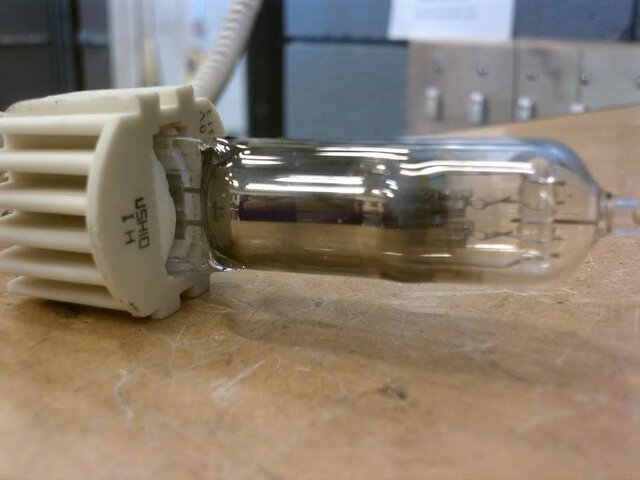firewater88
Active Member
I have attached a pic of a lamp out of our lobby lights, I have 37 ETC S4 50 degree fixtures as my main down light in my lobby. I use 575X lamps and get pretty good life out of them. My question is: can dust make the lamp burn out like this? The fixtures are usually covered in dust when I change the bulbs. I have just noticed that several of the reflectors are flaking off on the inside. All the ones I found had a lamp that looked like this, this being the worst. It does have a slight bulge on the side. This one and the others were installed about 18 months ago (I date them).
Wondering if it is getting super hot right before the lamp goes and that is what is causing the reflectors to flake. These are not on during the day, my 200' x 60' glass wall lets in enough light.
Any thoughts? or is it just age? These lamps? My theatre lights don't suffer this much damage and they are much older than these units.
Wondering if it is getting super hot right before the lamp goes and that is what is causing the reflectors to flake. These are not on during the day, my 200' x 60' glass wall lets in enough light.
Any thoughts? or is it just age? These lamps? My theatre lights don't suffer this much damage and they are much older than these units.



